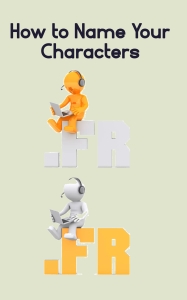
“What's in a name? That which we call a rose by any other name would smell just as sweet.”
Powerful lines, these! Yet think of any Shakespearean character and you would agree that their names tick many boxes:
- They are short & easy to remember
- Are realistic to the setting and era
ü The name’s root often tells us something about the character. Think Hamlet, for example and the name’s root means “fool” which is clearly indicative of the character’s hapless behavior throughout the play.
So, if you have an intriguing story waiting to be put on paper, it’s essential that you also come up with fascinating character names that stick. Done right, the character name will help with:
- Revealing the personality of the character
- Helping the readers differentiate between major characters
- Perhaps even help make the character iconic
Whether you choose a short, crisp name like James Bond or go with the telltale Artful Dodger, here are some tips to help you navigate the choice:
#1 Ensure the name does justice to the character
Odds are that if your heroine is destitute versus someone who is dripping diamonds, you would name them differently. Ever so often the name also offers insight into the character. It’s no coincidence that a man-eating serial murderer should be named Hannibal to allude to his cannibalism. Similarly, you wouldn’t want to name a particularly timid character, “Tiger”, unless, of course, the intent is ironic. This is not to say, of course, that all nomenclature needs to be this symbolic.
Interestingly, academics have found that your first name actually changes the way you look, a phenomenon dubbed "The Dorian Gray" effect, after Oscar Wilde's eponymous hero. Research has also shown that there are cultural stereotypes attached to names, which can be put to use by writers.
Sometimes the sheer length of the name can also be indicative of characteristics. Hyphenated last names, abbreviations, prefixes, and suffixes are all options you can play around with to add a little bit of color.
#2. Keep it in sync with the story you are telling
Now this would mean watching out for a number of aspects including:
- The genre you are writing in
- The era
- The setting of the story
Much as Scarlett O’Hara is an iconic name, it would definitely sound out of place other than in the American South, just as Byomkesh Bakshi, India’s answer to Poirot, wouldn’t work anywhere else.
Character names could even be drawn from the theme. Fifty Shades of Grey, for example, has characters named Grey and Steele, offering a visual aesthetic. You could also experiment with sounds in arriving at a name. The use of literary devices like repetition and alliteration can make the name stand out in the reader’s memory.
#3. Avoid giving several characters similar-sounding names.
You sure don’t want your readers to be confused between that morally upright character and a thug. Remember, therefore, not to have names of major characters starting with the same letters, ending with the same sound or rhyming; in short, anything that could leave the readers confused.
It may be fitting to mention here, that not all characters need to have names. That barista or the taxi driver does not need a name if he just makes an entry in one scene and does not really take the story further.
Pro Tip- Using character names that end with an “s” leave you with awkward possessive forms. It is best therefore to avoid names ending with “s” at least for the major characters whose names need to be repeated often.
#4 Think outside the box
Remember how “Tom Marvolo Riddle" from Harry Potter turned out to be an anagram of "I am Lord Voldemort." The important bit, however, is to use such nomenclature techniques when they significantly add to the story and are not seen as clever wordplay alone.
#5. Draw inspiration
Writer’s block is surely a thing. And it applies not just to the mechanics of the plot but also to encountering a block when it comes to thinking of names. In such a scenario, it will help to draw inspiration from daily life, borrow from friends and family, and more. Legend has it, that JK Rowling even went to graveyards to think of names for her series. Even if you do not want to go that far, you could definitely look up a phone book, a baby name book, anagram generators, or even websites that offer rhyming words, for ideas.
Having arrived at a name, sit back and say it out aloud. Odds are that if it has a ring to it, it is easy to pronounce and remember, your readers will love it too.
So go ahead and let your characters carve their names on many hearts!
About the Author







Comments